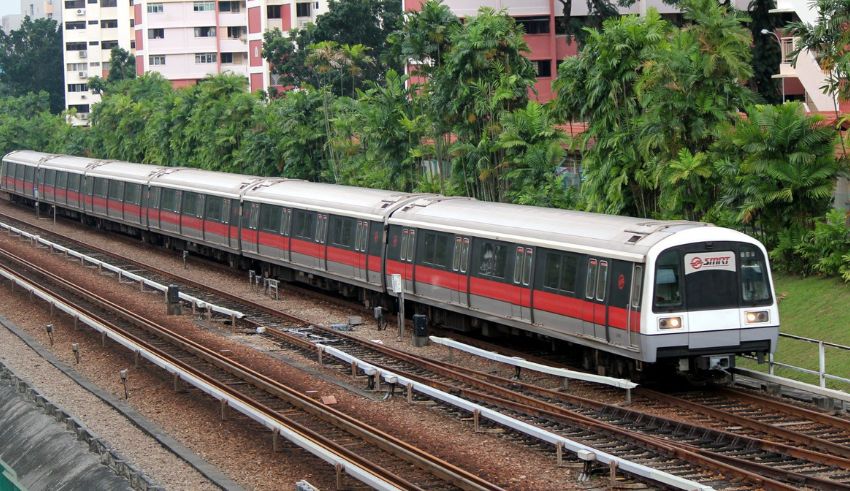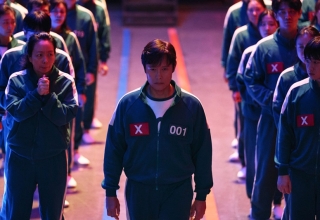
Currently suffering one of the most significant train disruptions in recent history, Singapore is left with hundreds of thousands of worried commuters. One of the busiest and most crucial lines of transportation in the country, the East-West Line’s service suspension started its second day after a Wednesday train accident almost at 9:25 a.m. This event has not only altered regular travel paths but also shown the shortcomings and challenges of urban mobility in a very populated city.
Established in 1987, SMRT Corporation, the operator, revealed that when the train derailed on its way back to a depot, a power trip was triggered. In a joint statement, Chairman Seah Moon Ming and Chief Executive Ngien Hoon Ping clarified which unexpected issue the derailment caused during the evacuation of the old train originated from. On one of the first-generation trains, more precisely, a bogie’s wheels came off the rail from a broken axle box. Important track equipment including point machines and the third rail was seriously damaged by this misalignment, which at last resulted in the power outage and terminated train operations.
Direct Results for Travelers
Nine stations—known for high passenger counts—along the East-West Line have been impacted. In response to the current situation, SMRT has started complimentary replacement bus services to help minimize the consequences on travelers. As of 1:30 p.m. on Thursday, more than 28 hours since normal operations last were in place, service between Buona Vista and Jurong East remained halted.
Retired veteran journalist and current associate Christopher Tan of the Singapore University of Social Sciences noted that this incident represents one of the longest Mass Rapid Transit (MRT) system delays in Singapore’s history. Problems including a flooded tunnel and broken cables caused delays of 12 and 14 hours respectively in past significant disruptions in 2012 and 2017. However, the present situation has far exceeded historical events in scope, which raises doubts on the dependability of Singapore’s transportation infrastructure.
Travel Frustration and Problems
Many of the commuters express their dissatisfaction with the current situation, which has been exacerbated by plenty of rain; they obviously feel frustrated. The weather has made the existing travel options more difficult, hence packed replacement buses are even less comfortable and more time-consuming. Traveling from Jurong East to Kent Ridge, thirty-year-old administrator Esther Lai reported “unpleasant.” Her early trip was unpleasant since she described how busy alternative bus lines had her squeezing into packed cars.
Usually taking one and a half, 44-year-old cleaner Kamala Subramaniam voiced concerns regarding her now two-hour and a half commute. Her reliance on the packed replacement services complicates her trip even more since cab prices are deemed to be too expensive. “It’s frustrating as my travel is already somewhat distant. Thanks; my management is understanding. He cautioned me yesterday that I might be late, reflecting the challenges many face juggling job responsibilities with the uncertainty of public transit.
For the commuters—especially those who rely on the East-West Line for daily transportation—the ongoing disturbance has more widespread effects. Families, students, and many working professionals depend on the line—which forecasts a daily traffic of over 500,000 people in 2020—as a critical artery. Not only may the lack of reliable service over a lengthy period affect personal plans, but it also compromises the city-state’s economy particularly if disruptions continue.
Apart from the problems of transportation, the disturbance raises questions about the age of Singapore’s train system. After this incident, rigorous inspection of the LTA’s and SMRT’s efforts to maintain and enhance the system would most likely be under focus. Although the affected train was 35 years old, Tan pointed out that metro systems all throughout the world can run considerably older trains depending on appropriate maintenance. For example, MTR for Hong Kong continues to run some of its 45-year-old first trains. Therefore, the focus should be on the age of the rolling stock as well as on the quality of the current maintenance policies.
Recoverable Projects Underactive
Acknowledging the gravity of the situation, the Land Transport Authority (LTA) is aggressively fixing damage. Starting recovery projects as soon as the rain stopped, the LTA said in a statement uploaded on social media that engineers worked through the night to assess and repair the damage. The degree of the track damage will force more time-consuming repairs than previously anticipated. Authorities have also been open in updating the public, thereby reassuring visitors that their safety comes first.
The beginning of the Primary School Leaving Exams (PSLE) also signals this disruption and introduces still another degree of difficulty to the situation. Students’ and their families’ worries on how the delays would compromise their ability to show up on time for crucial assessments have Reflecting the authorities’ commitment to assist students at this critical juncture, local media sources reveal that preparations have been developed to ensure that exam candidates will not be punished for delays resulting from the disturbance of the rail service.
Although Singapore works through the challenges this disturbance presents, long-term transportation infrastructure problems should always be considered. The event stresses the significance of maintaining robust infrastructure and ensuring public transportation network dependability. Expecting a rapid return to normal, commuters have to negotiate these unexpected challenges.
Given the current situation, discussions on infrastructure investment and modernization are most likely to take front stage. Stakeholders might insist on better maintenance practices and investments in more contemporary technologies to reduce the possibility of such catastrophes in the future. Long-term robustness of Singapore’s transportation infrastructure will finally depend on proactive maintenance, judicious investments, and a commitment to deliver every commuter consistent services. The knowledge acquired from this disturbance could inspire development and ensure that Singapore’s public transportation remains a brilliant example of reliability and efficiency in the following years.




















